
The first bloom of the common Queen’s Tears bromeliad, Bilbergia nutans, is just so very startling when it arrives, especially if you’ve only seen it in photos before. Like drop-your-coffee-cup startling. As though David Hockney was in the garden overnight manically touching up the blooms. This bilbergia’s constituent colors are impressively shocking on a small scale, but seeing them together made me realize I’ve been actively pursuing these colors elsewhere in the garden.
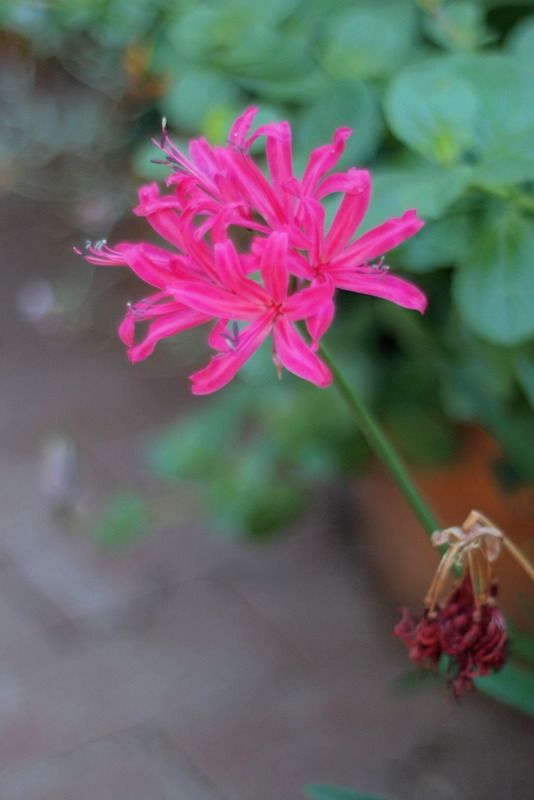
The deep pink on the bilbergia just about matches the last of the nerines to bloom.
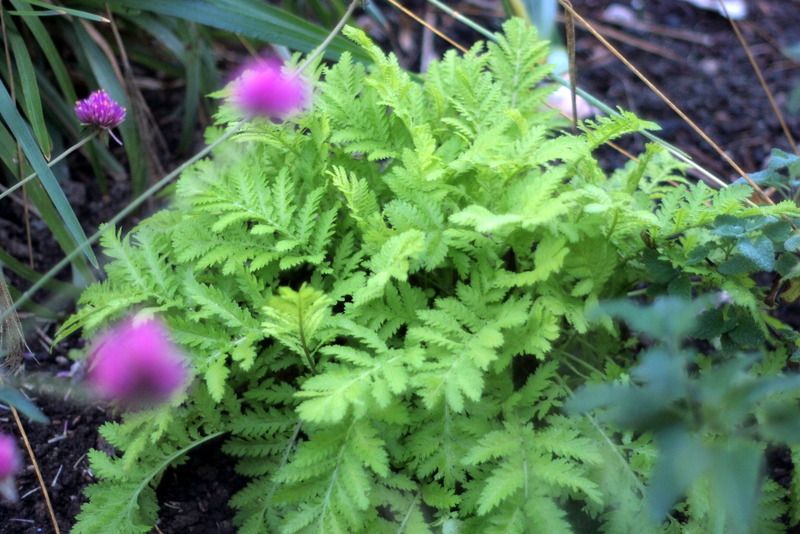
The lime green of the bilbergia can be found in Tanacetum vulgare ‘Isla Gold.’ Planted again this fall at a pathway’s edge, it’s growing well. Better air circulation and a little more moisture might be the answer. I won’t know if it gets thin and patchy again until next summer. Everything seems so much more promising in fall.
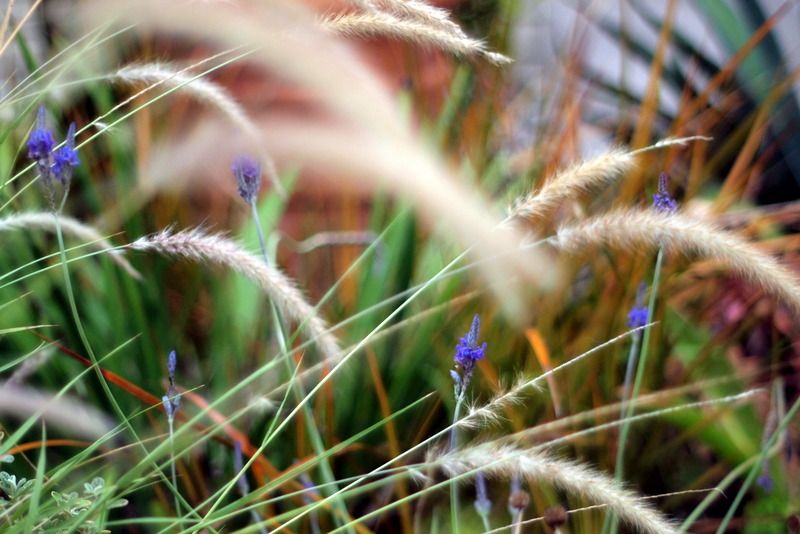
The bilbergia’s deep blue can be found in salvias like Salvia guaranitica or ‘Indigo Spires,’ or this fern-leaf lavender, Lavandula pinnata var. buchii
I found a couple fern-leaf lavender locally, when I was out searching for some more blue agastache to plant this fall. This lavender was once a really big deal, big enough to drive all the way up to Western Hills (written about here) to fetch when it arrived on U.S. shores in the ’80s. Tender and lacking the eponymous scent, but with those amazingly deep navy blue blooms and finely cut, jade green-grey foliage. Not very long-lived, it grows woody at the base and has to be renewed frequently with cuttings, which is possibly why I stopped growing it. And then it became easily available and I moved on to other plants less easily available, as is my way. I remembered it as Lavandula multifida, but the tag indicated Lavandula pinnata var. buchii. Whatever. Somewhere along the way, its name changed, or so I thought.
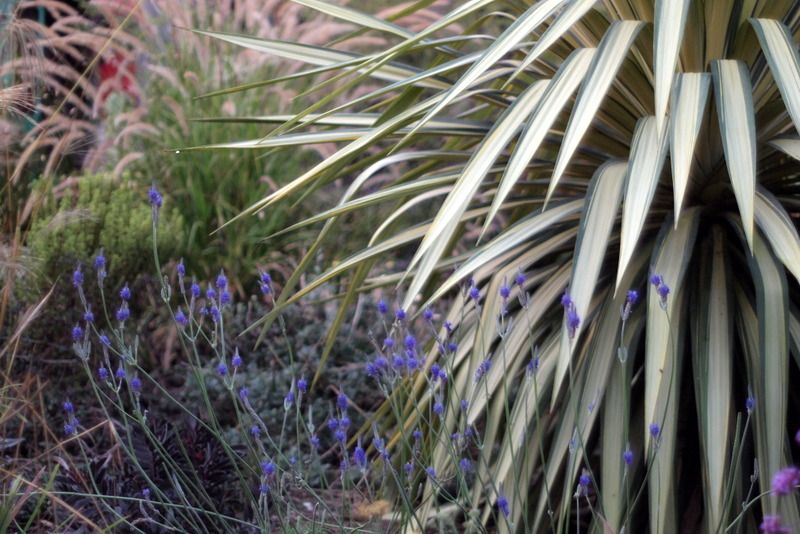
After watching it fill out and increase in bloom for a week or so, and realizing this was just the small, shrubby, blue-flowering answer I was looking for, I went back to the nurseries to find more. This time the label said Lavandula multifida. Now I was confused. At the hort.net site I found this remarkably pertinent discussion from 2002 by John MacGregor:
“Not surprising that you are confused. You are not the only one. The nursery industry in California doesn’t have a clue on this one.
First, Lavandula multifida, L. pinnata, and L. buchii are three different species. In recent years, I have bought about everything offered in the trade in this state under these names, trying to sort it out, and have received the same species from the same nursery under different names as well as different species under the same name.
Twenty-five years ago we had all three species at the Huntington Botanical Gardens (at the time, L. buchii was classified as a variety of L. pinnata). I shared cuttings of all three with various wholesale nurseries and collectors, and authentic plants of each were sold at Huntington plant sales. Apparently, along the way some of the cuttings must have been lost or the name tags of some of the survivors were mixed up (L. pinnata and L. buchii–both from the Canary Islands–are much more frost-tender than L. multifida–which is from southern Europe and North Africa). Lately, everything I have seen labeled “L. pinnata var. buchii” in nurseries is L. multifida. L. multifida is also sold occasionally as “Lavandula ‘California'” or “California Lavender” as well as under its own name. For instance, the lavender offered by Monterey Bay Nursery as “Lavandula pinnata buchii” and illustrated on their web site is actually Lavandula multifida…” and so on.
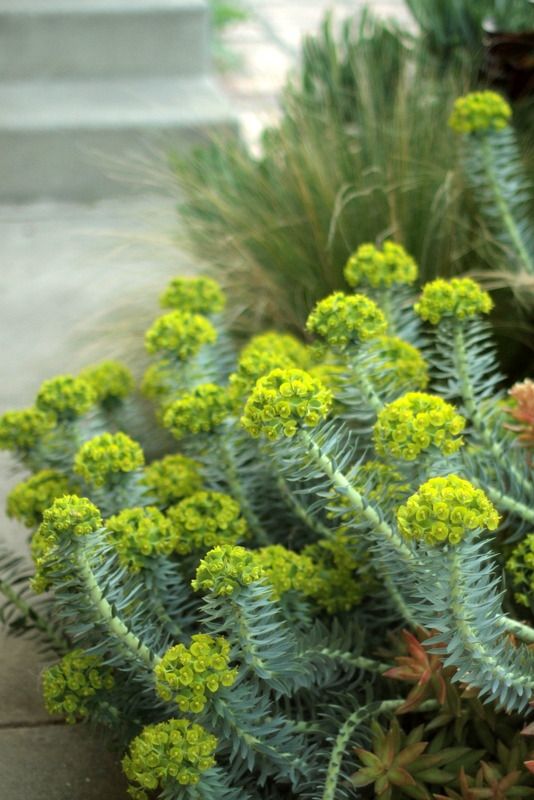
I wish I could get the fern-leaf lavender closer to Euphorbia rigida, but without some demolition, there’s just no room. Photo from last spring.

The lavender would be equally wonderful with Euphorbia mauritanica in the front gravel garden, which is building up good structure for spring bloom. But no room at the inn there either.
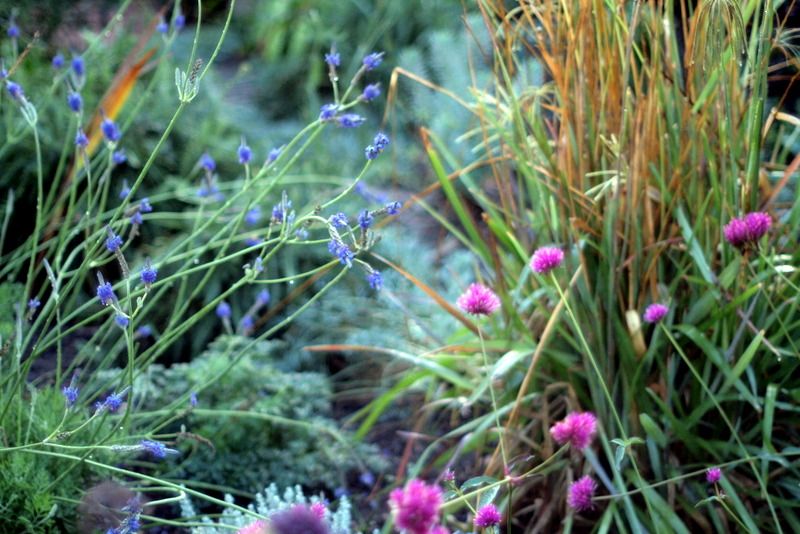
Until I saw the bilbergia bloom, I wasn’t aware that I’d been orchestrating these colors elsewhere: deep pink, chartreuse and dark blue.
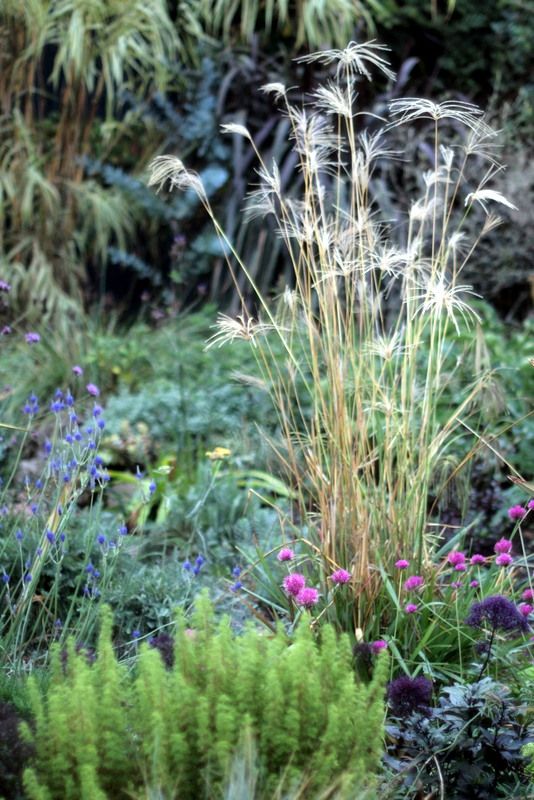
Gomprehna ‘Fireworks,’ fern-leaf lavender, Pelargonium crispum.
(This gomphrena has almost cured me of my allium envy.)
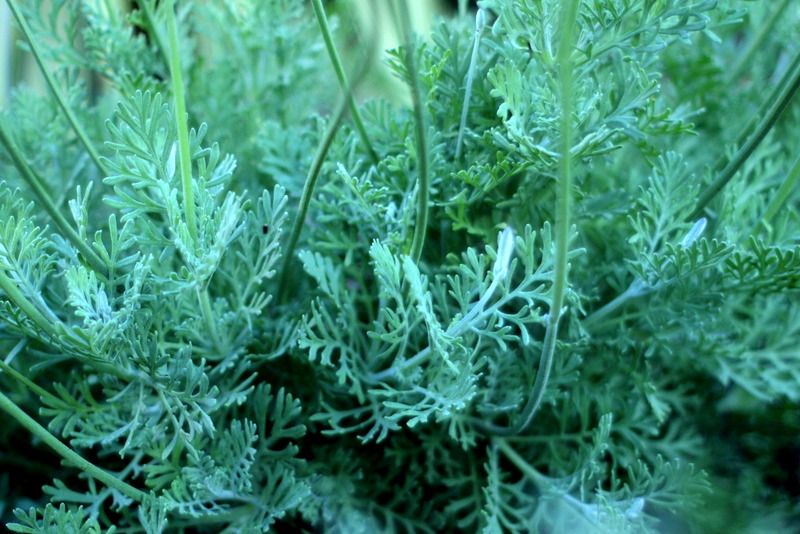
After some fall planting, for a brief moment the garden has taken on the colors of Bilbergia nutans. I wouldn’t mind seeing more of these colors next spring too.

I love love love the Bilbergia nutans- we have been growing it since I can remember. It has such vibrant intricate colors and almost looks plastic. The other photos are beautiful as well- you featured some of my favorite- the Fernleaf Lavender, the Gopher Plant, the Gomphrena- all beautiful!!!
Your photos of the Bilbergia and the fernleaf lavender are both better than any I’ve been able to produce. I find the lavender particularly hard to photograph as mine don’t have backgrounds that show the flowers at their best. I remembered the lavender as L. multifida but, when you mentioned the classification issue, I checked my own file and, sure enough, I found it listed as both multifida and pinnata, even though both purchases came from the same nursery mere months apart.
Kacky, I can’t wait to have loads of blooms on it. And thanks for your kind words too.
Kris, this lavender is the devil to photograph, so I’m glad you brought that up. I finally had to include the yucca as background for the reasons you mentioned.
I had that lavender for quite a few years, though I was always bothered by the lack of lavender fragrance despite the beauty of the plant. A lavender must smell like a lavender. Expectations are odd things.
Hoov, that is a serious flaw in this otherwise nearly perfect plant.
Bilbergia nutans…I bought one from Flora Grubb during the Fling, potting it up when I moved. Fairly happy all summer, though I forgot to water one week, and one shoot died…now the remaining shoot is limp, even though it hasn’t gotten below the low 40’s. Hoping to salvage it to see the bloom you have…nice!
Interesting about the name of this lavender. It is a favorite of mine. I guess I should start calling it Lavandula multifida. I don’t really mind the lack of fragrance as it blooms year round for me and grows much faster than any other species.